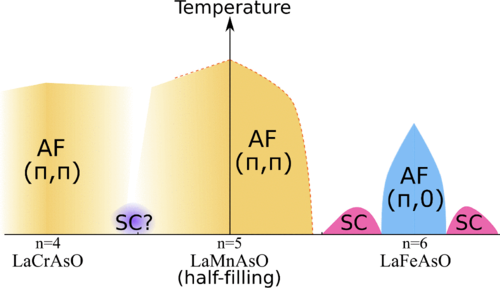In my research, I have delved into understanding strong electronic correlations in different materials. These correlations are crucial for certain physical phenomena; they help explaining real materials behaviors such as superconductivity and magnetism. They are also key in understanding how materials interact with external electromagnetic fields. As a Computational Materials Scientist, I am an expert in analyzing these complex behaviors and in developing highly optimized codes. In order to do that, I have always tried to follow a few key principles:
My main scientific activity has been to study and propose novel experiments for understanding the physics of strongly correlated materials. These systems show a plethora of effects such as the Mott (metal-to-insulator) transition and Hund metallicity. These electronic-structure states are known to be intimately related with high-Tc superconductivity and magnetism.
Thus, understanding these states and proposing new materials with such properties is key to solve the long-standing problem of high-Tc superconductivity and to exploit their full potential in real world applications.

I studied iron-based superconductors, magic-angle twisted bilayer graphene, and 2D materials. You can find a full list in the Talks and Publications page.
Studying strongly correlated materials is computationally very demanding. The paradigmatic model it is used is called the Hubbard model and its extensions. This is a model that has been known for decades but whose exact solution is impossible to obtain, so that often new approximations and methodologies, as well as optimized algorithms are developed to reach meaningful solutions.
Furthermore, this implies using several different tools to obtain solutions of the Hubbard model. A typical workflow will include: choosing the material and optimizing its crystal structure, performing Density Functional Theory (DFT) simulations for the ground-state properties, projecting and downfolding into a smaller sub-space (this step is normally done to make the original material problem more tractable), and finally, solving the Hubbard model by solving the equivalent quantum embedded problem.

In my case, I worked on implementing new approximations, as the Slave-Spin Mean-Field method, and on optimizing the code defining new algorithms.
An important aspect of strongly correlated materials is to define a smaller sub-space of bands and to solve the Hubbard model for these subset. However, this projection or downfolding is still a very human-involved problem, i.e., it needs a scientists deciding which bands to project to.
In the recent years, there has been a huge push for automation of both simulations and experiments in Materials Science. However, the aforementioned problem makes that still an expert in strong correlations is needed to study what is happening in these materials.
I am currently working on improving this procedure to make the study of strongly correlated materials more automated, or at least, with minimal human intervention.
A key aspect of Science that is often overlooked is the management of the data that is produced. Following a set of good practices in Data Management is very important to keep the data that we, scientists, produce in a consistent way. Furthermore, it allows to exploit the capabilities of Artificial Intelligence and Machine-Learning techniques, possibly opening new routes to find new materials or to explain long-standing problems, such as the one of high-Tc superconductivity.
Since 2023, I am working in Data Management and I am involved in Data Science activities for strongly correlated materials. My goal is to provide a service for the scientific community. I develop the software behind the NOMAD Archive & Repository, for computations in strongly correlated materials. In order to do that, I follow the F.A.I.R. principles, i.e., data has to be organized to be Findable, Accessible, Interoperable, and Reusable.